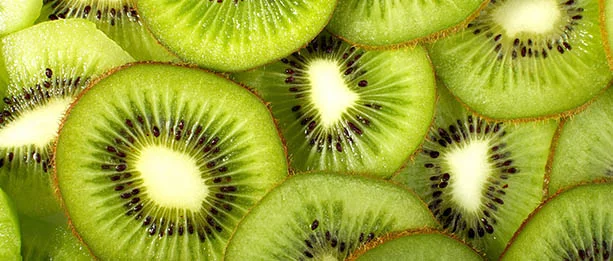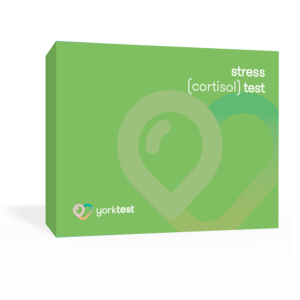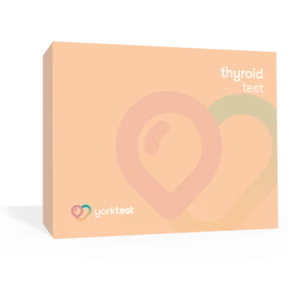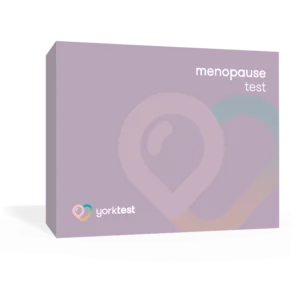Though not as widely recognized as other food allergies, kiwi allergy can significantly affect those who suffer from it. Understanding what a kiwi allergy is, including its connection to latex-fruit syndrome and oral allergy syndrome, can help you grasp the nuanced nature of this particular fruit allergy and what other cross-reactive foods may be cause for concern.
The kiwi fruit (also known as Chinese gooseberry or Macaque peach) is an edible berry of a woody vine-like plant called Actinidia. Kiwifruit is native to China, but its popularity took off in the 1950s following WW2 after Allied soldiers stationed in New Zealand had enjoyed the fruit. With increasing consumption, there has been a large increase in allergies to kiwi fruit.
What is a Kiwi Allergy?
A kiwi allergy occurs when the body’s immune system mistakenly identifies certain proteins in kiwifruit as harmful, triggering an allergic reaction. An allergy to kiwi can cause a range of symptoms, including mild reactions, such as a prickly feeling in the mouth or skin rash and itching sensations, to more dangerous symptoms like anaphylaxis.
Kiwi allergy is often linked to other allergies, such as birch pollen or latex, and may be part of a condition known as oral allergy syndrome. Some people who are allergic to kiwi may be able to eat the fruit if it is extensively heated, as high temperatures can break down the causative proteins. However, the nature of this allergy and its myriad of symptoms and cross-reactivities with other fruits varies widely from person to person.
How Common is Kiwi Allergy?
The prevalence of kiwi allergy varies widely depending on the region, age range, and presence of existing allergic conditions. It’s a condition that’s not as rare as some might think, and studies indicate that kiwi allergies are on the rise.[1]
In the U.S., rates of reported kiwi allergy are estimated to be around 3% to 4% in adults and about 3% in children, according to Reuters. However, for those with existing allergy diseases, the prevalence is nearly double, with one cross-sectional study reporting 6.6% of the 370 patients observed showing an allergy sensitization to kiwi fruit.[2]
Kiwi allergy is often associated with Oral Allergy Syndrome (OAS), which is a cross-reactivity condition where individuals allergic to certain pollen experience allergic reactions to related foods. Validating the cause for concern with OAS, a small study found that 39% of individuals with peanut allergy reported allergy symptoms when eating kiwi, and a majority of them displayed IgE sensitization to certainproteins from kiwi seeds.[3]
Oral Allergy Syndrome, also known as Pollen Food Allergy Syndrome (PFAS), involves proteins that cross-react with environmental allergens such as pollen. Some common foods that can trigger OAS include:
- Birch pollen: apple, almond, carrot, celery, cherry, hazelnuts, kiwi, peach, pear, plum
- Grass pollen: celery, melons, oranges, peaches, tomato
- Ragweed pollen: banana, cucumber, melons, sunflower seeds, zucchini
Cases involving PFAS heighten the complexity of such allergy conditions, often making it difficult to understand the true rates of kiwi allergy, among other fruits and vegetables listed above. If you find you’re allergic to kiwi or one of the foods mentioned above, it’s important to exercise caution with potentially cross-reactive foods.
Symptoms of Kiwi Allergy
Kiwi allergy is an immune system response to the proteins found in kiwi fruit, leading to a range of symptoms that can affect individuals differently. While some people may experience only mild reactions, others could face severe and potentially life-threatening conditions.
Understanding these symptoms is crucial for prompt recognition and management. The most common kiwi allergy symptoms include:
- Skin rash and itching: Initial signs often involve the skin.
- Hives: Raised, itchy welts that appear on the skin.
- Oral allergy syndrome symptoms: Itching or tingling sensations in the mouth immediately after eating kiwi.
- Nausea and vomiting: The body’s attempt to expel the allergen.
- Diarrhea: A gastrointestinal reaction that may accompany nausea.
- Abdominal pain: Cramping or discomfort in the stomach area.
- Respiratory issues: Sneezing fits, nasal congestion, and difficulty breathing or wheezing, which can be particularly concerning for those with asthma.
The most extreme reaction is anaphylaxis, which demands immediate medical attention due to its rapid onset and severity. Symptoms of anaphylaxis include severe shortness of breath from airway constriction, a significant drop in blood pressure leading to dizziness or fainting, and a rapid pulse. This condition can be fatal if not treated promptly with epinephrine.
Recognizing these symptoms early and knowing when they signal potential emergencies like anaphylaxis is vital in safeguarding those with kiwi allergies. Immediate action following symptom identification can prevent serious consequences and ensure safety for affected individuals.
Why Am I Suddenly Allergic to Kiwi?
The phenomenon of suddenly developing an allergy to kiwi, or any food for that matter, in adulthood can be perplexing and unsettling. Known as adult-onset allergies, these unexpected immune system responses arise even after years of previous exposure without issue. Understanding why this occurs requires a look into how our bodies recognize and react to allergens.
In adults who have previously enjoyed kiwis without adverse reactions, several factors could contribute to this sudden shift:
- Changes in immune system function: As we age, our immune system undergoes changes that may alter how it responds to various substances. One literature review found that while some food allergies are often outgrown, others (like tree nut allergies) are more likely to persist into adulthood.[4]
- Increased exposure or limited exposure early on: Repeatedly consuming large amounts of certain foods might increase your risk of developing an allergy to them due to overexposure. Likewise, a lack of exposure to certain foods early in life could trigger allergy symptoms down the road.
- Cross-reactivity with other allergens: Sometimes proteins in one substance resemble those in another. If you’re allergic to birch pollen (a common trigger), you might also react adversely when eating kiwi because their proteins are similar.
- Health conditions and medications: Certain health conditions or medications can modify your body’s immunity landscape enough that allergies can present themselves where none existed before.
- Environmental factors: Shifts in environment—moving from one geographical location to another with different plants and pollens—can expose individuals’ immune systems anew or differently than they’ve been accustomed to.
- Gut health changes: The gut microbiome plays a critical role in training the immune system on what should be considered safe versus harmful; significant alterations here could impact tolerance levels toward previously ingested foods.
- Latex-fruit syndrome: Some adults who develop kiwi allergy later in life may have a condition known as latex-fruit syndrome, which is another case of cross-reactivity.
Understanding that adult-onset allergies are indeed possible underscores not just our bodies’ complexity but also emphasizes why allergy testing and nutritional counseling are crucial when new symptoms appear unexpectedly. Recognizing signs early on enables better management strategies for living comfortably despite newly developed sensitivities.
Kiwi Allergy and Latex-Fruit Syndrome
Kiwi allergy and latex-fruit syndrome represent a fascinating intersection of allergic reactions, shedding light on how seemingly unrelated substances can trigger similar immune responses due to shared protein structures. This relationship is crucial for individuals with either condition to understand, as it helps in identifying potential risks and managing their allergies more effectively.
Latex-fruit syndrome is characterized by an allergic reaction to certain fruits in individuals who are also allergic to natural rubber latex. The proteins found in latex share structural similarities with those present in various fruits, including kiwi, banana, avocado, chestnuts, and papaya among others.[5] This similarity leads the immune system of sensitized individuals (those with a latex allergy) to mistakenly recognize the proteins in these fruits as harmful—just as it does with latex—resulting in an allergic reaction.
The link between kiwi allergy and latex-fruit syndrome lies primarily within this cross-reactivity:
- Shared proteins: Certain proteins such as Hevein proteins are common both in natural rubber latex and kiwis; they serve as allergens responsible for triggering symptoms.
- Symptom overlap: Individuals affected by latex-fruit syndrome may experience symptoms ranging from mild oral irritation (Oral Allergy Syndrome), skin rashes, or hives after consuming kiwi fruit or handling them without gloves—to more severe reactions like gastrointestinal distress or even anaphylaxis if they have pre-existing severe sensitivity towards latex.
- Diagnosis & management implications: Awareness of this syndrome significantly impacts diagnosis; healthcare providers often inquire about food-related reactions when diagnosing a suspected case of natural rubber latex allergy—and vice versa—as well as emphasize avoidance strategies encompassing not just direct contact but dietary considerations as well.
For individuals affected by either condition, this knowledge can lead to better management strategies, such as avoiding certain foods that could potentially carry offending proteins or ensuring thorough washing of produce. Informed decision-making around diet modifications tailored specifically to one’s unique sensitivities ensures overall well-being.
What Foods to Avoid if Allergic to Kiwi?
If you are allergic to kiwi, you may need to avoid certain foods to prevent allergic reactions. Kiwi allergies have links with allergies to latex, pollen, and other foods, such as:
- Avocado
- Banana
- Carrot
- Chestnut
- Apple
- Peach
- Papaya
- Pineapple
- Olive
- Potato
- Wheat
- Sesame and poppy seeds
- Hazelnuts
People with a kiwi allergy should read ingredient labels carefully, inform restaurant staff about their allergies, and be cautious when consuming smoothies, fruit salads, prepackaged frozen fruits, and fruit-based desserts.
Avoidance isn’t just about steering clear of these items directly. It extends into being mindful of cross-contamination risks during food preparation processes as well as educating oneself continuously about ingredient lists on packaged goods where hidden sources might lurk unassumingly.
How Do I Know If I Have a Kiwi Allergy?
Identifying a kiwi allergy involves recognizing symptoms that occur after consuming the fruit and undergoing specific tests to confirm the diagnosis. Given the range of possible allergic reactions, from mild oral irritation to severe anaphylaxis, pinpointing kiwi as the culprit behind these signs can be crucial for managing your dietary choices effectively.
To accurately determine if you have a kiwi allergy, healthcare professionals rely on several diagnostic tools:
- Skin prick test: Considered one of the most reliable methods for diagnosing food allergies, this test entails placing a small amount of kiwi extract on your skin and then lightly pricking or scratching the area so it gets underneath the skin’s surface. If you’re allergic, a raised bump resembling a mosquito bite will appear within 15-20 minutes.
- Specific IgE blood test: This blood test measures levels of IgE antibodies in response to specific allergens including kiwi proteins. Elevated IgE levels may suggest an allergy exists towards substances tested. YorkTest’s Food Allergy Test is a convenient, at-home solution that measures IgE levels across a wide range of foods.
- Oral food challenge: Performed under strict medical supervision due to its potential risks, an oral food challenge involves ingesting gradually increasing amounts of suspected allergen—in this case, kiwi—to monitor for adverse effects directly caused by consumption.
Employing these diagnostic approaches not only helps in confirming suspicions about a kiwi allergy but also provides individuals with detailed insights for safely managing their condition. Through precise testing methods, such as an IgE blood test, you craft management strategies to your unique sensitivity. This targeted approach allows for more nuanced dietary adjustments beyond broad avoidance recommendations typically made after general positive findings.
Are There Treatments for Kiwi Allergy?
While there is no cure for kiwi allergy, several treatment strategies aim to manage symptoms and potentially reduce the severity of allergic reactions. The mainstay approach involves avoiding kiwi and products containing kiwi extracts altogether.
However, advancements in allergy management have introduced potential treatments that focus on desensitization—the gradual exposure to the allergen in controlled conditions—aiming to increase tolerance over time. Additionally, other interventions are commonly used as a form of kiwi allergy treatment, including:
- Oral Immunotherapy: This emerging treatment involves administering small but increasing amounts of the allergenic food—in this case, kiwi—to the patient over a period. The goal is to gradually desensitize the individual’s immune system, reducing their sensitivity to kiwis and thus minimizing reaction severity upon accidental exposure.
- Anti-IgE monoclonal antibodies: Medications like omalizumab target IgE antibodies responsible for allergic reactions by blocking their action, which can help control severe allergy effects including those triggered by foods such as kiwi fruit.
- Epinephrine auto-injectors: For individuals with severe allergies prone to anaphylaxis—an extreme life-threatening reaction—carrying epinephrine auto-injectors becomes essential; while not a preventive measure against sensitivities per se it serves as critical emergency intervention should an unexpected consumption lead toward acute episodes ensuring timely administration could prove lifesaving.
Beyond medical interventions, education on allergen avoidance and dietary management plays a vital role in daily life, helping individuals navigate risks associated with hidden sources of kiwi in processed foods.
Emerging therapies like sublingual immunotherapy represent the frontier of allergy treatment research, offering alternative routes for allergen exposure that might be safer, especially for younger populations disproportionately affected by food allergies.
Scientific References:
- James, C.A., Welham, S. and Rose, P. (2023), Update on the global prevalence and severity of kiwifruit allergy: a scoping review. Int J Food Sci Technol, 58: 6158-6181. https://doi.org/10.1111/ijfs.16680
- Bedolla-Pulido TR, Ãlvarez-Corona SA, Bedolla-Pulido TI, Uribe-Cota B, González-Mendoza T, Bedolla-Barajas M. Prevalencia de sensibilización y alergia al kiwi (Actinidia deliciosa) en adultos con enfermedades alérgicas [Prevalence of sensitization and allergy to kiwi fruit (Actinidia deliciosa) in adults with allergic diseases]. Rev Alerg Mex. 2018 Jan-Mar;65(1):19-24. Spanish. doi: 10.29262/ram.v65i1.293. PMID: 29723938.
- van Odijk J, Sjölander S, Brostedt P, Borres MP, Englund H. High frequency of IgE sensitization towards kiwi seed storage proteins among peanut allergic individuals also reporting allergy to kiwi. Clin Mol Allergy. 2017 Nov 1;15:18. doi: 10.1186/s12948-017-0073-4. PMID: 29118674; PMCID: PMC5664576.
- Iweala OI, Choudhary SK, Commins SP. Food Allergy. Curr Gastroenterol Rep. 2018 Apr 5;20(5):17. doi: 10.1007/s11894-018-0624-y. PMID: 29623490; PMCID: PMC5940350.
- Blanco C. Latex-fruit syndrome. Curr Allergy Asthma Rep. 2003 Jan;3(1):47-53. doi: 10.1007/s11882-003-0012-y. PMID: 12542994.













